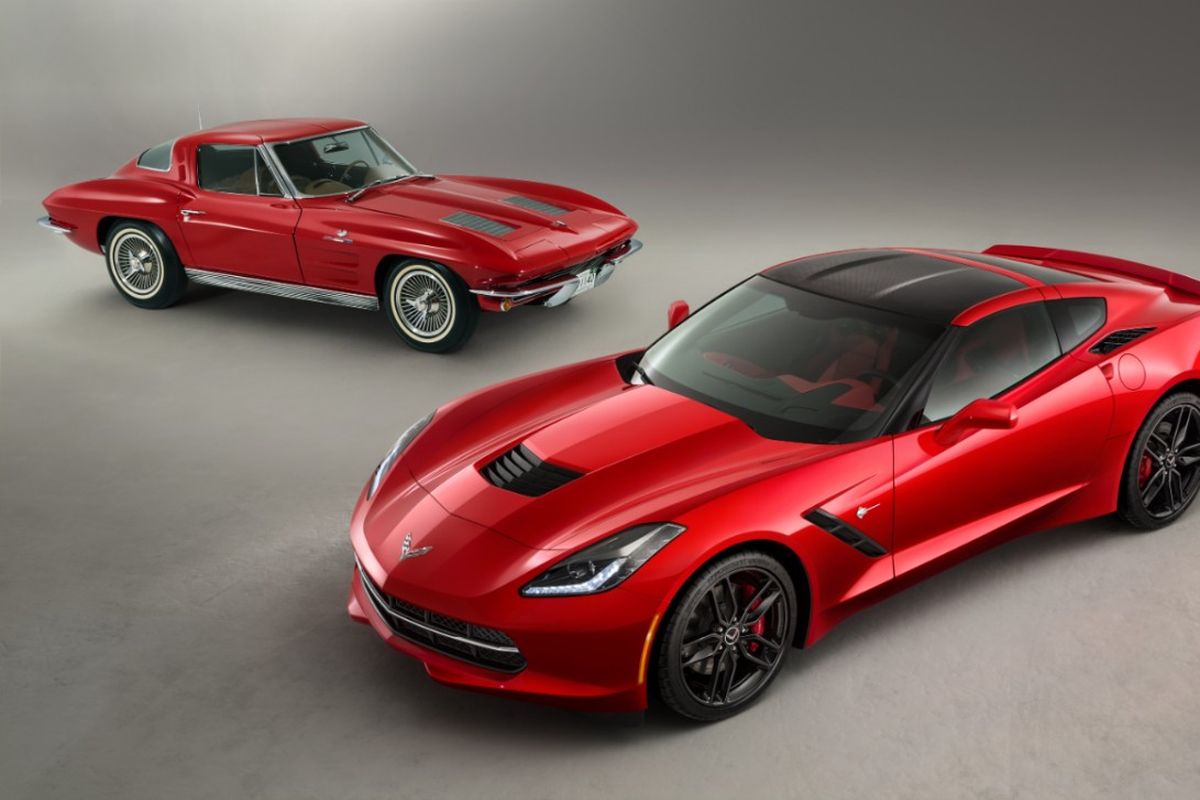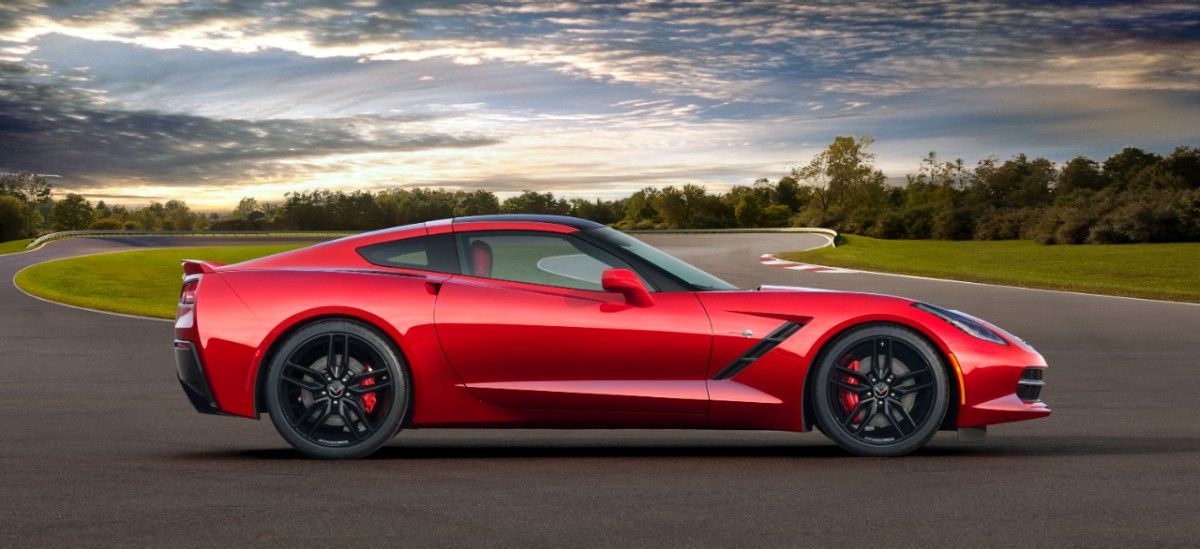The Corvette Stingray is back
(Copyright General Motors)
Corvette is America’s sports car and for the money is supposed to be the best on the planet. The last time Chevrolet adorned a Vette with the epic Stingray moniker was in 1976; a year Greg Brady could have embarrassed it with the family station wagon. Chevrolet made a bold statement this month with the reveal of a completely redesigned machine they believe is once again worthy of the Stingray name. Well, there are two carryover parts: A roof panel latch and a cabin air filter.
Tearing down a historic car and rebuilding it from the ground up can be dangerous. Enthusiasts root for it to succeed but are just as ready to critique it down the river if they feel at all alienated by the changes. General Motors put faith in their car guys and held an internal design competition to entertain any feasible concept as to how a modern Stingray ought to look. Of the three hundred design proposals considered the one that made it to production looks a lot like the 2009 Stingray concept that appeared in two of the Transformers movies.
At a glance the new Stingray’s has noticeable European overtones; perhaps a light hint that with an estimated starting price of $52,000 it’s expected to compete with the likes of the 2013 Ferrari 458 Italia ($236,182) and 2013 Porsche 911 ($83,050). The new design makes a few major breaks from Corvette heritage in certain places and pays homage to it in others.
For 2014 the Stingray has rear-quarter windows; a staple of the car’s classic design that hasn’t appeared on a Corvette since 1962. Conversely we no longer see the classic four round taillights that have appeared on every Corvette since 1961. The new taillights are hexagonal in shape as can be found on the current Camaro.
Beneath its new skin the Stingray weighs 100 pounds less than the base 2013 model thanks to a new aluminum space frame. The wheelbase, front and rear tracks are nearly an inch wider and weight distribution ballerinas at a perfect 50/50 split. The measurements help the new Corvette pull 1.0g on the track, or about enough to stick a bag of McDonalds to the door.
Perhaps the most significant change to the Stingray serves as a reminder that cars like this are on the automotive endangered species list. Under the hood you’ll now find a new aluminum 6.2-liter V8 with direct fuel injection, continuously variable valve timing and cylinder shutoff that’s good for 450hp and 450lb-ft of torque. Zero to sixty comes in under four seconds. Most importantly: Highway mileage is expected to reach 30mpg.
To put that in perspective my 1998 Subaru Wagon is lucky to get 22mpg highway, makes about 150 horsepower and smells like a dog I’ve never owned.
Make no mistake, the new 6.2L V8 is crucial to GM. Small block chief engineer Jordan Lee says his team spent two years working on the combustion chamber of the new engine alone. GM plans to use variations of the engine including a V6 in vehicles such as their new full-size pickups and SUVs. .
In the Stingray the new V8 can be mated to either a six-speed automatic or seven-speed manual with rev matching, meaning the car will take care of heel-toe duties if the driver prefers, or secretly doesn’t know what that is.
If there was a major problem with the Corvettes of years past it was the interiors, which considering the price and competition of the car were a lot like Hamburger Helper on the menu at a steak house. For 2014 the Stingray interior is now adorned with premium materials including leather, aluminum and carbon fiber. Every seat option comes heated and cooled; no butt’s desire goes unheeded.
The instrument panel now includes two 8-inch video displays and all the gauges are digital. There’s also a new steel-reinforced grab handle for the passenger mounted on the center console, more commonly referred to in layman’s terms as an “oh, s***!” handle.
From what we know so far the 2014 Corvette Stingray appears as though it’s going to spread a thick layer of icing on Corvette’s cake. Re-imagining the brutish old-school bargain of the sports car world could have gone horribly awry, but on paper at least Chevrolet looks like they got it right. Most importantly the bottom line remained intact: When it goes on sale this fall it’ll still cost about $30,000 less than a 911.
Who says being frugal can’t be fun?
Watch an in-depth discussion about the 2014 Stingray with General Motors’ Chief Engineer, Tadge Jeuchter here.
SOURCE








